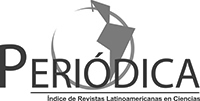Leeches associated to Hydrophyta in laguna Los Patos, Buenos Aires, Argentina.
Keywords:
Hirudinea, Hydrophyta, freshwater, los Patos, Argentina,Abstract
The most important environmental factors influencing the number and kind of leeches in a given habitat are: food's availability, nature of the sub- strate, depth, water movements, size and nature of the water body, hardness, ph and water temperature, disolved oxygen, siltation, turbidity, and water salinity. Leeches are usually less abundant at greater depths primarily because of the lack of vegetation, suitable substrates, and food. The main objective of this work is to identify the leeches associated to aquatic plants in Laguna Los Patos and to analyse seasonal population variations considering mean density, species rich- ness, dominance, and frequency. Quantitative samples were taken monthly, from June 2000 to April 2002. Temperature, ph, conductivity, and dissolved oxygen were measured. Twelve species were found: Helobdella triserialis, H. lineata, H. hyalina, H. adiastola, H. diploides, H. duplicata. H. striata, H. simplex, H. michaelseni, Haementeria eicchorniae, Batracobdel/a gemmata, and Orchibdella pampeana (Cyclobdellidae). Helobdella triserialis, H. lineara. H. adiastola, H. diploides, and O. pampeana were dominant and constant whereas H duplicata. H. striata, H. simplex, H. mtchaelseni, Haetnenteria eicchorniae, and Batracob della gemmata were occasional. Helobdel/a triserialis and H. hyalina exhibited the higher mean density and occurred around ali year. Helobdella duplicata. H. striata, H. simplex, H. michaelseni, Haementei ia eicchorniae, and Batracobdella gemmata were scarce, being recorded in spring, summer and autumn. Hydrocotyle ranunculoides housed the highest species richness (ten species) while the lowest species richness was observed in Azolla filiculoides (five specics).References
Boiscn Bennikc, S.A. 1943. Contributions to thc ccology and biology of the Danish frcsh-watcr lecchcs (1 Iirudinca), Folia limnologica scandinavica 2: 1-109.
Cornet, M. 1986. Evolution des parametres de structurc des populations de mollusques bivalvos des fonds :i Abra Alba au large de Bassin d' Arcachon. Vie Milieu 36: 15-25.
Darrigrán, G., S.M. Martín, B.S. Gullo & L. Armendáriz 1998. Macroinvcrtebrates associated with Limnoperna fortunei (Dunkcr, 1857) Bivalvia, Mytilidae), Río de la Plata, Argentina. Hidrobiologia 367: 223- 230.
Gullo, B.S. & G. Darrizrán. 1991. Distribución de la fauna ele hirudíncos litorales del estuario del Río de la Plata, República Argentina. Biología Acuática 15: 216-217.
Gullo, 8.S 1998. Hirudineos Glossiphoniidae asociados a Lemnáceas, en Los Talas (Pdo. de Be- risso), Buenos Aires. Neotrápica 44: 65- 68
Poi de Neiff A. 1977. El plcuston de Pistia stratiotes de la laguna Barranqueras (Chaco, Argentina). Ecosur 4: 69-1 O l.
Poi de Nciff A. 1981. Mesofauna relacionada a la vegetación acuática en una laguna del valle del Alto Paraná argenuno, Ecosur 8: 41-53.
Ronderos, R.A, L.A Bulla, J.A. Schnack & J.C. Ves Losada. 1966. Estudio del pleuston y del bafon de las lagunas de Chascornús y Yalca (Prov. de Bs As.). Anales de la Comisión de lnvestiga clones Científicas 7: 311-389.
Sawyer, R.T. 1986. Leech biology and behaviour Vol 2. Oxford, Clarcndon Prcss, 419- 793.
Schnack, J.A., E.A., Domizi, A.L. Estévcz & G.R. Spinelli. 1978. Ecología de las comunidades y su estudio relativo a diversidad, estructura e información, Consideraciones generales y referencia a la mesofauna del pleuston. Ecosur 5: 131-155.
Downloads
Issue
Section
License
La publicación en la RMLP se realiza bajo los términos de la licencia de uso y distribución Creative Commons BY-NC-SA 4.0 para Argentina (https://creativecommons.org/licenses/by-nc-sa/4.0/) que permite a terceros la distribución, la copia y la exhibición del artículo siempre que citen la autoría del trabajo, la publicación en la RMLP, número concreto y las páginas en la que encontraron la información. No se puede obtener ningún beneficio comercial y no se pueden realizar obras derivadas con fines comerciales que no autorice la editorial. Si se remezcla, transforma o construye sobre el material, deben distribuir sus contribuciones bajo la misma licencia que el original.
La puesta a disposición del artículo en la RMLP supone para los autores argentinos el cumplimiento de lo establecido en la Ley 26899 de Creación de Repositorios Digitales Institucionales de Acceso Abierto, Propios o Compartidos, del 13/11/2013 en su artículo 5º, en lo relativo a la obligatoriedad de facilitar en acceso abierto los resultados de investigaciones financiadas por agencias gubernamentales y de organismos nacionales de ciencia y tecnología del Sistema Nacional de Ciencia, Tecnología e Innovación.









